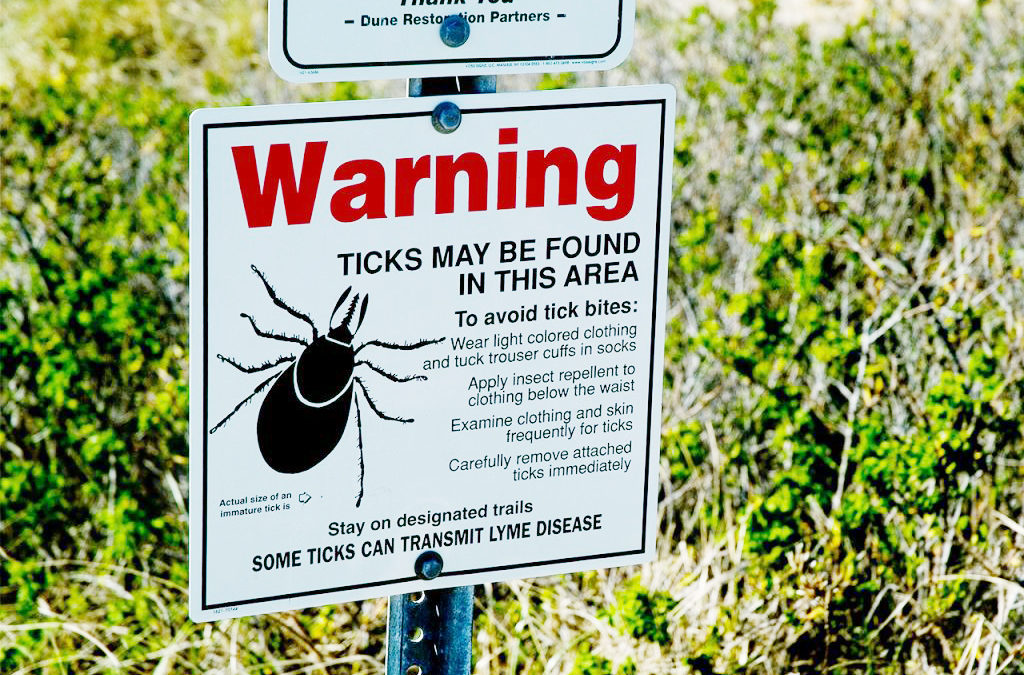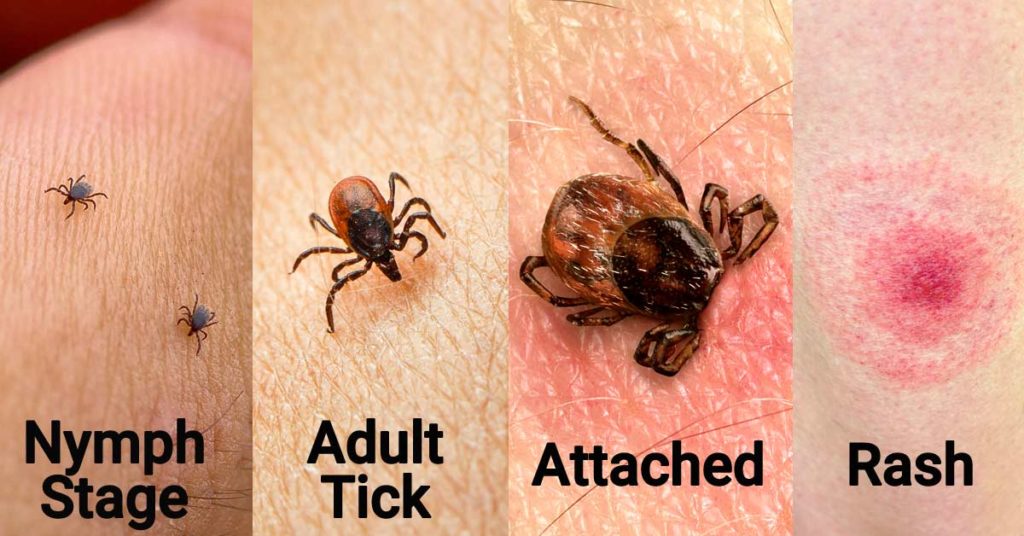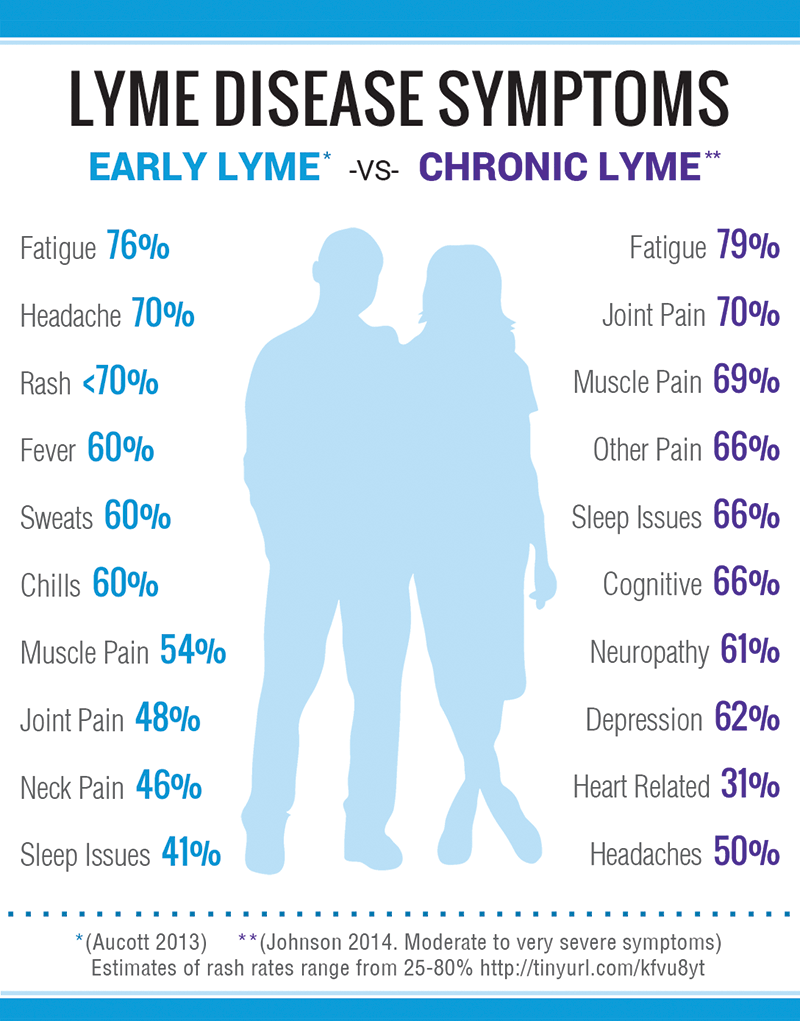Everything You Need to Know About Lyme Disease

What is Lyme disease?
Lyme disease is an infectious disease caused by the bacteria Borrelia burgdorferi. B. burgdorferi is transmitted to humans by a bite from an infected black-legged or deer tick. The tick becomes infected after feeding on infected deer, birds, or mice.
A tick has to be present on the skin for at least 36 hours to transmit the infection. Many people with Lyme disease have no memory of a tick bite.
Lyme disease was first recognized in the town of Old Lyme, Connecticut, in 1975. It’s the most common tickborne illness in Europe and the United States.
People who live or spend time in wooded areas known for transmission of the disease are more likely to get this illness. People with domesticated animals that visit wooded areas also have a higher risk of getting Lyme disease.
Symptoms of Lyme disease

People with Lyme disease may react to it differently, and the symptoms can vary in severity.
Although Lyme disease is commonly divided into three stages — early localized, early disseminated, and late disseminated — symptoms can overlap. Some people will also present in a later stage of disease without having symptoms of earlier disease.
These are some of the more common symptoms of Lyme disease:
- a flat, circular rash that looks like a red oval or bull’s-eye anywhere on your body
- fatigue
- joint pain and swelling
- muscle aches
- headache
- fever
- swollen lymph nodes
- sleep disturbances
- difficulty concentrating
Contact your healthcare provider immediately if you have any of these symptoms.
Lyme disease symptoms in children
Children generally experience the same Lyme disease symptoms as adults.
They usually experience:
- fatigue
- joint and muscle pain
- fever
- other flu-like symptoms
These symptoms may occur soon after the infection, or months or years later.
Your child may have Lyme disease and not have the bull’s-eye rash. According to an early study, results showed roughly 89 percent of children had a rash.
Lyme disease treatment
Lyme disease is best treated in the early stages. Treatment for early localized disease is a simple 10- to 14-day course of oral antibiotics to eliminate the infection.
Medications used to treat Lyme disease include:
- doxycycline, amoxicillin, or cefuroxime, which are first-line treatments in adults and children
- cefuroxime and amoxicillin, which are used to treat women who are nursing or breastfeeding
Intravenous (IV) antibiotics are used for some forms of Lyme disease, including those with cardiac or central nervous system (CNS) involvement.
After improvement and to finish the course of treatment, healthcare providers will typically switch to an oral regimen. The complete course of treatment usually takes 14–28 days.
Lyme arthritis, a late-stage symptom of Lyme disease that may present in some people, is treated with oral antibiotics for 28 days.
Lyme disease
If you’re treated for Lyme disease with antibiotics but continue to experience symptoms, it is referred to as post Lyme disease syndrome or post-treatment Lyme disease syndrome.
About 10 to 20 percent of people with Lyme disease experience this syndrome, according to a 2016 article published in the New England Journal of Medicine. The cause is unknown.
Post-Lyme disease syndrome can affect your mobility and cognitive skills. Treatment is primarily focused on easing pain and discomfort. Most people recover, but it can take months or years.
Post-Lyme disease symptoms

The symptoms of post Lyme disease syndrome are similar to those that occur in the earlier stages.
These symptoms may include:
- fatigue
- difficulty sleeping
- aching joints or muscles
- pain or swelling in your large joints, such as your knees, shoulders, or elbows
- difficulty concentrating and short-term memory problems
- speech problems
Is Lyme disease contagious?
There is no evidence that Lyme disease is contagious between people. Also, according to the Centers for Disease Control and Prevention (CDC), pregnant women cannot transmit the disease to their fetus through their breast milk.
Lyme disease is an infection caused by bacteria transmitted by blacklegged deer ticks. These bacteria are found in bodily fluids, but there’s no evidence that Lyme disease can be spread to another person through sneezing, coughing, or kissing.
There is also no evidence that Lyme disease can be sexually transmitted or transmitted through a blood transfusion.
Lyme disease stages
Lyme disease can occur in three stages:
- early localized
- early disseminated
- late disseminated
The symptoms you experience will depend on which stage the disease is in.
The progression of Lyme disease can vary by individual. Some people who have it don’t go through all three stages.
Stage 1: Early localized disease
Symptoms of Lyme disease usually start 1 to 2 weeks after the tick bite. One of the earliest signs of the disease is a bull’s-eye rash.
The rash occurs at the site of the tick bite, usually, but not always, as a central red spot surrounded by a clear spot with an area of redness at the edge. It may be warm to the touch, but it isn’t painful and doesn’t itch. This rash will gradually fade in most people.
The formal name for this rash is erythema migrans. Erythema migrans is said to be characteristic of Lyme disease. However, many people don’t have this symptom.
Some people have a rash that’s solid red, while people with dark complexions may have a rash that resembles a bruise.
The rash can occur with or without systemic viral or flu-like symptoms.
Other symptoms commonly seen in this stage of Lyme disease include:
- chills
- fever
- enlarged lymph nodes
- sore throat
- vision changes
- fatigue
- muscle aches
- headaches
Stage 2: Early disseminated Lyme disease
Early disseminated Lyme disease occurs several weeks to months after the tick bite.
You’ll have a general feeling of being unwell, and a rash may appear in areas other than the tick bite.
This stage of the disease is primarily characterized by evidence of systemic infection, which means infection has spread throughout the body, including to other organs.
Symptoms can include:
- multiple erythema multiforme (EM) lesions
- disturbances in heart rhythm, which can be caused by Lyme carditis
- neurologic conditions, such as numbness, tingling, facial and cranial nerve palsies, and meningitis
The symptoms of stages 1 and 2 can overlap.
Stage 3: Late disseminated Lyme disease
Late disseminated Lyme disease occurs when the infection hasn’t been treated in stages 1 and 2. Stage 3 can occur months or years after the tick bite.
This stage is characterized by:
- arthritis of one or more large joints
- brain disorders, such as encephalopathy, which can cause short-term memory loss, difficulty concentrating, mental fogginess, problems with following conversations and sleep disturbance
- numbness in the arms, legs, hands, or feet
Lyme disease diagnosis
Diagnosing Lyme disease begins with a review of your health history, which includes looking for reports of tick bites or residence in an endemic area.
Your healthcare provider will also perform a physical exam to look for the presence of a rash or other symptoms characteristic of Lyme disease.
Testing during early localized infection is not recommended.
Blood tests are most reliable a few weeks after the initial infection, when antibodies are present. Your healthcare provider may order the following tests:
- Enzyme-linked immunosorbent assay (ELISA) is used to detect antibodies against B. burgdorferi.
- Western blot is used to confirm a positive ELISA test. It checks for the presence of antibodies to specific B. burgdorferi proteins.
- Polymerase chain reaction (PCR) is used to evaluate people with persistent Lyme arthritis or nervous system symptoms. It is performed on joint fluid or cerebrospinal fluid (CSF). PCR testing on CSF for diagnosis of Lyme disease is not routinely recommended due to low sensitivity. A negative test doesn’t rule out the diagnosis. In contrast most people will have positive PCR results in joint fluid if tested prior to antibiotic therapy.
Lyme disease prevention
Lyme disease prevention mostly involves decreasing your risk of experiencing a tick bite.
Take the following steps to prevent tick bites:
- Wear long pants and long-sleeve shirts when in the outdoors.
- Make your yard unfriendly to ticks by clearing wooded areas, keeping underbrush to a minimum, and putting woodpiles in areas with lots of sun.
- Use insect repellent. One with 10 percent DEET will protect you for about 2 hours. Don’t use more DEET than what’s required for the time you’ll be outside, and don’t use it on the hands of young children or the faces of children under the age of 2 months old.
- Oil of lemon eucalyptus gives the same protection as DEET when used in similar concentrations. It shouldn’t be used on children under the age of 3 years old.
- Be vigilant. Check your children, pets, and yourself for ticks. If you’ve had Lyme disease, don’t assume you can’t be infected again. You can get Lyme disease more than once.
- Remove ticks with tweezers. Apply the tweezers near the head or the mouth of the tick and pull gently. Check to be certain that all tick parts have been removed.
Contact your healthcare provider if and whenever a tick bites you or your loved ones.
Lyme disease causes
Lyme disease is caused by the bacterium Borrelia burgdorferi (and rarely, Borrelia mayonii).
B. burgdorferi is transmitted to people through the bite of an infected blacklegged tick, also known as a deer tick.
According to the CDC, infected blacklegged ticks transmit Lyme disease in the Northeastern, Mid-Atlantic, and North Central United States. Western blacklegged ticks transmit the disease on the Pacific Coast of the United States.
Lyme disease transmission
Ticks that are infected with the bacterium B. burgdorferi can attach to any part of your body. They’re more commonly found in areas of your body that are hard to see, such as the scalp, armpits, and groin area.
The infected tick must be attached to your body for at least 36 hours in order to transmit the bacterium.
Most people with Lyme disease were bitten by immature ticks, called nymphs. These tiny ticks are very difficult to see. They feed during the spring and summer. Adult ticks also carry the bacteria, but they’re easier to see and can be removed before transmitting it.
There is no evidence that Lyme disease can be transmitted through air, food, or water. There’s also no evidence that it can be transmitted between people through touching, kissing, or having sex.
Living with Lyme disease
After you’ve been treated for Lyme disease with antibiotics, it may take weeks or months for all the symptoms to disappear.
You can take these steps to help promote your recovery:
- Eat healthy foods and avoid foods that contain a large amount of sugar.
- Get lots of rest.
- Try to reduce stress.
- Take an anti-inflammatory medication when necessary to ease pain and discomfort.
Test tick for Lyme disease
Some commercial laboratories will test ticks for Lyme disease.
Although you may want to have a tick tested after it bites you, the (CDC) doesn’t recommend testing for the following reasons:
- Commercial laboratories that offer tick testing aren’t required to have the same stringent quality control standards as those for clinical diagnostic laboratories.
- If the tick tests positive for a disease-causing organism, it doesn’t necessarily mean you have Lyme disease.
- A negative result could lead you to the false assumption that you’re not infected. You could have been bitten and infected by a different tick.
- If you’ve been infected with Lyme disease, you’ll probably start showing the symptoms before you get the tick test results, and you shouldn’t wait to start treatment.






